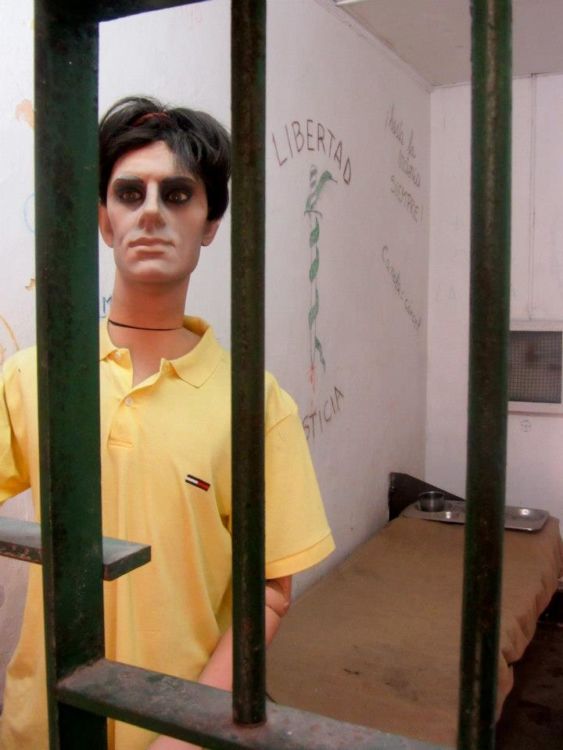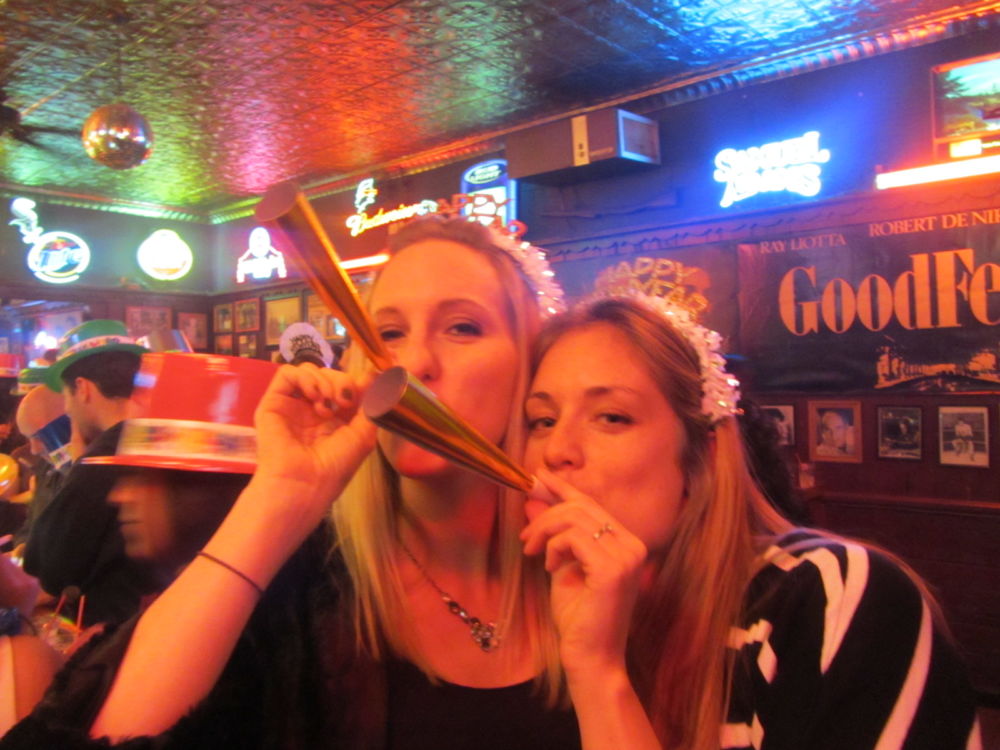Lagunas of Uyuni
On the second day of our 3-day tour of the Salar de Uyuni, I started to get a little car-weary. There were seven of us in the jeep, plus our driver, Hector, who had also become our default guide. He didn’t seem to relish his position, and eventually stopped answering our questions about the landscape, preferring instead to grunt and mumble something to himself in Spanish.

“Just between us,” I told Jared, “I probably could have done the one-day tour and been okay.”
“I know,” Jared said. “Maybe we’re getting too old for this kind of thing.”
Now that the main event – the salt flats – was behind us, I consulted the brochure to see what we had to look forward to.
Lakes, flamingos, desert, hot springs, geysers. Okay. Sounded kind of interesting. I perked up a bit. We’d spent the last night in a salt hotel. I wasn’t sure how necessary it was to build the hostel out of salt – salt bricks, loose salt crystals instead of a floor – but it was a novel experience. I’d slept well, not cold at all, and was in reasonably good spirits.

We saw about a bazillion lagunas that day, most populated by honest-to-goodness pink flamingos, which I’d never seen outside of a zoo. Obviously, I took about 895 photographs of the flamingos, all of which looked exactly the same.



Despite their general lack of activity, and the fact that I have a rather low opinion of birds, I was really taken by these flamingos. We tried to ask Hector what made them pink, but all I got was a grunt and something about algae.
Besides visiting flamingos, we did a lot of driving through a desert. I was amazed at how quickly the salt flats gave way to long stretches of dirt and sand, which quickly saturated every solid surface in the car. My sunglasses were coated by a permanent film of dust, and the seven of us silently passed packets of cookies around, trying not to breathe for fear of launching into a coughing fit.
We stopped at the arboles de piedras (rock trees), a stark landscape covered by giant rocks, one of which did look like a tree:

But what I’ll remember most of all was not the rock trees, but the wind. It was fierce, and drove me straight back into the safety of the jeep.
Next up was the Laguna Colorada, which several of our jeepmates quickly declared the highlight of their trip. It’s a lake filled with tannins (or something) that gives it a striking red color, swirled with white, dotted with flamingos, and placed in front of a few mountains.
It was pretty incredible, like somebody had melted a pool of crayons into a bowl.

The morning came with the promise of a refreshing dip in the hot springs, to make up for the lack of showering we’d all been doing. First, we stopped at the ‘Morning Sun’ geysers. They blew everyone away, but I was kind of blasé because I’d seen similar in New Zealand.
I’ve noticed a disturbing trend as I get older – it’s a lot harder to get me excited about stuff. I’m hoping it’s a passing phase.
Hector cleared his throat long enough to stress that we not go too close to the geysers. Apparently a girl fell in once and died. I really wanted to know how it happened – did she fall straight to the core of the earth? Did she shrivel up like a raisin? Cook like an egg? – but I didn’t have the language skills to find out.
Instead, I watched closely as several people got too close, sticking their bare hands in the geysers’ smokestreams and jerking back, surprised, when it proved to be too hot.
No one fell in, though.

Then we got to the hot springs, which were hot, as advertised. I made the mistake of wetting my dirty hair, which resulted in increased sediment deposits on my scalp. If you go – keep your hair dry.

After that, Hector gave us a choice:
1) Drive an hour to the Green Lake, which is only green when the wind stirs it up, usually in the afternoon. He assured us that it would not be green and was not bonita at this time of day.
2) Head straight back to Uyuni (about 6 hours), stopping at some sort of Italian village (? no one was clear on this) along the way.
At this point, I was a staunch supporter of option 2. The sooner we could get this driving over with, the better. And, you know, I’d seen about 12 lakes at this point. I was laked out.
Some of the others in our group huddled together, whispering.
“I think he is hungover,” the french guy said. “I think he just does not want to drive to the lake. The guidebook says it is spectacular.”
It was passively-unanimously decided that we would go to the possibly-not-green lake. Hector grumbled, but didn’t put up a fight.
The lake was not green.

On the plus side, Hector drove like a bat out of hell so it only took about 30 minutes to get there. We were on our way back to Uyuni before we knew it.
Several hours from Uyuni, a fellow jeep had broken down in a valley full of llamas. Hector stopped to lend a hand and we all took photos of the llamas. I remembered how we’d eaten llama steak for our first lunch on the salt flats and marveled at how much they tasted like cow.

By the end of the drive, we were all ready to be out of the car, Hector most of all.
“3o minutes,” he announced.
We cheered as the news filtered to the back of the jeep.
“15!”
Again, rousing cheers. We could literally see Uyuni in the distance, shimmering under the heat of the sun. Then, a jolt. The car dipped gently to the right and Hector wordlessly brought the jeep to a stop.

We’d already used our spare. Hector had inexplicably switched it out the previous day. Fortunately, there are an average of 463 tourist jeeps on the road to Uyuni at any given time, so it wasn’t long before someone stopped to help us out. The boys all pitched in to change the tire. The girls stood on the side of the road. Hector gave instructions.
And we made it back. Tired, dirty, with memory cards full of pictures and most of us facing overnight buses in a few short hours.
The thought of doing it again exhausts me, and I won’t be in a hurry to sign up for another overnight tour. But, as usual, I’m glad I did it. I might be getting old, but it looks like a 3-day trip isn’t outside the realm of possibility for a 31-year-old.
For now, anyway.
*We paid 700 bolivianos (about $100) each for a 2-day, 3-night tour with Andes Salt Expeditions. The price was the best we found, and included our food, accommodation, and transportation. Certain park entry fees are extra (about 200 bolivianos total), no matter which company you go with. It did not include an English-speaking guide, but I wouldn’t have traded Hector – he gave us a little injection of local color. I’d recommend this company as long as you’re not looking for luxury, and they’re not giving me anything to say that!*







One Comment